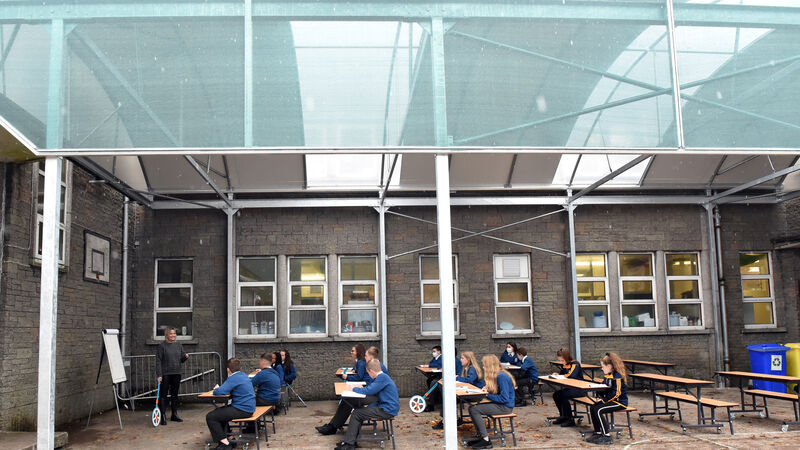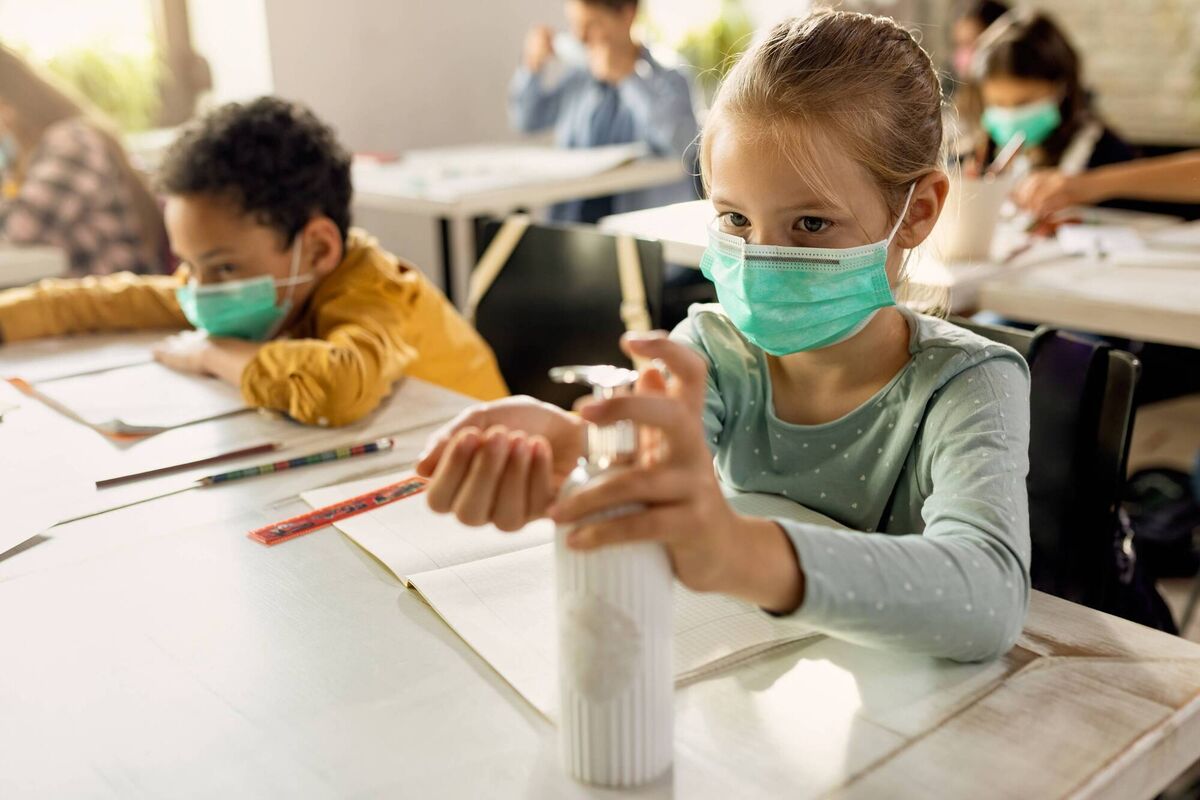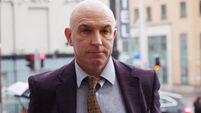Jess Casey: Windows open, masks on - What is being done to make schools safe?

Meghan Wallace, maths teacher with first year pupils from Colaiste Eamann Ris, in the new outside classroom at school. Many Irish schools have opted for fresh air breaks, open windows, or classes outside to combat the coronavirus. Photo: Eddie O'Hare
When it comes to our international neighbours, comparing safety measures in schools during the pandemic isn’t always an exact science.
For example, older students in England are only beginning to wear face coverings in classrooms now. Children in Irish classrooms have been doing so since last September. French classrooms have a much wider definition of ‘close contacts’, but the country only enforced two-metre physical distancing in February under stricter measures due to the UK variant.
Keep in mind that Irish schools have their own unique set of problems to mitigate against too, such as being the only country in Europe that had to plan for re-opening classes for more than 30 students. But while the specifics of approaches to in-person learning differ, they tend to share a few common elements; ventilation, mask-wearing, mass testing, and vaccination.
How does Ireland measure up internationally, what do we share, and what’s different?
Many countries in Europe that re-opened schools for in-person learning in 2021 promised a stronger focus on good ventilation. We’ve come a long way in terms of recognising the airborne nature of Covid-19, and fresh, circulating air is seen as a key factor in combating a major spread of the virus.
Irish schools took this on board early on, despite not having clear-cut guidance on it. Many opted for fresh air breaks, open windows, or classes outside, weather permitting. Last winter, Scottish schools relaxed dress codes and told students to wrap up well as it kept windows open, similar to here. Now, its government advice is to balance the need for increased ventilation with maintaining a minimum temperature of 16 degrees.
France has also updated its advice. Classrooms must be ‘aerated’ every hour for several minutes, by opening all windows to allow ventilation.
The virus is spreading indoors, particularly when windows are closed, because it can build up, according to Orla Hegarty, assistant professor at the School of Architecture at University College Dublin (UCD).
“It’s like cigarette smoke,” she said.
“They were keeping the disease down but it wasn’t tolerable. Children won’t be vaccinated by next September so they’ll have to get through next winter as well.”
Co2 monitors, which measure stale air, may help to play a role, she added.
“If you are breathing stale air, you have a much higher chance of inhaling the virus that someone else has exhaled.”
Ventilation is another very important layer of protection, in addition to well-fitting masks.
“Everything is about layers; the virus has to pass from one person to another. Anything you can do to stop that makes a difference.”
An advisory group here looking at areas of ventilation in both schools and other settings is due to publish their findings shortly.
Another common thread shared between in-person learning strategies is mask-wearing, with some obvious differences country-by-country.
Masks are not compulsory for students or teachers in Denmark, where there is a stronger focus on keeping classes of students isolated. In Spain and Italy, masks are compulsory for every student over the age of six.
In France, masks are not only compulsory, but children must now wear ‘category 1’ surgical masks, with cloth face coverings banned as they are seen as ineffective. In Germany, the policies on wearing masks in schools differs per state, with some districts focusing more on keeping students apart, or limited to smaller classes.

The current advice in England is that younger children do not need to wear a mask. However, one council in London has advised the primary schools under its remit to wear them when they return to the classroom next week.
Here, the Health Information and Quality Authority (Hiqa) has advised that there should be no change to the current minimum age of mask-wearing. Face coverings are not recommended for children under the age of 13. However, they are free to wear one if their family chooses.
Mass testing of students and staff is also another common element of in-person learning strategies, seen as important in terms of building trust in school safety measures. Last term, mass testing of 33,368 close contacts of confirmed Covid-19 cases linked to primary and secondary schools turned up a positivity rate of 2.7%.
These close contacts went through PCR testing, still considered the most reliable in terms of identifying cases of Covid.
Among the most common criticisms of safety meausures in Irish schools is that too conservative a view has been taken in identifying close contacts. Coupled with a lack of transparency and opaque figures published with limited context, this has undermined trust in mass testing and the data it produces among plenty of staff and parents.
So, widespread antigen testing, while less accurate than PCR tests, could be used as a way to rebuild confidence.
Other countries have been using the ‘rapid’ tests as part of their schools strategy. Austria ordered five million antigen tests for its school students. According to local reports, the scheme cost approximately €13.5m, working out at approximately €2.70 per test.
Younger children carry out the tests at home with their parents, while older children are tested at school. Those who test positive are then referred for further testing.
In England, all secondary school and college students took three Covid tests as they returned to their classrooms on Monday. After these initial tests, students and staff will be given two rapid tests to use each week at home.
Antigen testing could be on the cards in Ireland if health experts back the idea, according to Norma Foley, the Minister for Education. Professor Mark Ferguson of Science Foundation Ireland is currently preparing a report into its use.
Finally, vaccination is another common measure amongst schools operating in-person learning.
In the US, where some districts closed schools ahead of bars and restaurants, the race is on to re-open schools within the first 100 days of Joe Biden’s presidency.
Biden has directed each State to prioritize teachers, school staff and childcare workers in terms of vaccinations, When comparing Ireland with the US, remember that each different state has its own unique tangle of education administrators, local governance, and districts.

There is no single uniform policy in the States that unites schools.
Here, teachers and education staff are number 11 on the vaccination priority list, with those who are at risk due to being vaccinated under higher priority groups. Many younger teachers and Special Needs Assistants (SNAs) without underlying conditions may feel uncomfortable about ‘skipping’ a perceived queue.
However, it can be argued that this Government has deemed education and childcare among our most essential services, and so workers in the sector should be prioritised as such.





